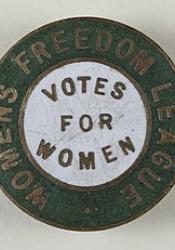Manchester
This was one of the 60 branches that belonged to The Women's Freedom League. It had another main branch in Middlesbrough as well. The main headquarters for the WFL was based in London.
Coordinates
Latitude: 53.480759300000
Longitude: -2.242630500000
Longitude: -2.242630500000


